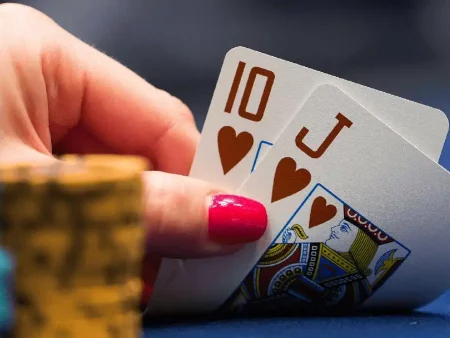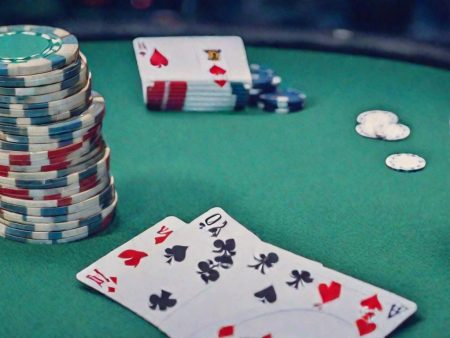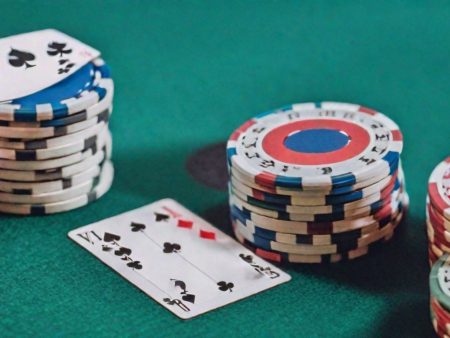In the poker and betting industries, the term “sizing” refers to both the amount of the bet and how it is selected. In no-limit and limit poker, this is a crucial part of the strategy. The ability to place bets that are perfectly suited to the current situation increases your chances of success. This skill sets apart experienced mobile casino players, who analyze multiple factors and make decisions based on them, from those who follow a more formulaic approach.
The concept of sizing in poker
In general, “sizing” comes from the English word “size,” which means “measurement.” Every poker player encounters this aspect of the game. Beginners often rely on intuition, while more experienced players adjust their bets according to their objectives, such as increasing the size of the pot, making a bigger bet, or executing a bluff. There is no universal “ideal” bet size for these scenarios. Choosing the best bet requires evaluating the players’ card ranges, their positions at the table, the total pot, and other key factors.
Choosing a bet size
There are three main categories of poker bets in online casinos: small, medium, and large. These are usually represented as a percentage of the total pot:
- Up to 35% – small bets
- Up to 65% – medium bets
- Over 65% – large bets
Twenty years ago, professional players preferred medium and large bets. This was effective due to the prevalence of weak opponents and the limited experience of many poker players. As time passed, the number of recreational players decreased, leading to a deeper focus on game theory. As a result, strategies using small bets emerged. These bets were no longer just a way to extract additional profit from weaker opponents’ hands but also served as part of bluffing strategies.
- Small bets. Small bets are those that make up up to 35% of the total pot. Generally, bets smaller than 20% are rarely used, as they tend to offer favorable odds to opponents. The exception to this is in all-in situations, although even here, bets smaller than 20% are uncommon.
- Medium bets. Bets of 40-60% are used in a variety of situations. These can be used both for all-in plays and for bluffs. The choice depends on the table position, the total pot, previous actions, and the range of the opponents’ hands.
- Large bets. A large bet is typically at least 70% of the total pot. Experienced players may even make bets equal to 100% of the pot or overbets when the situation calls for it. At lower limits, most players tend to play more straightforwardly, making large bets rare. However, as the skill level of players increases, all-ins become more common, whether with strong hands or bluffs.
Information about an opponent’s potential capabilities
An opponent’s ranking is not the most important factor in determining bet size. It is merely one aspect. The opponent’s playing style and previous actions can provide clues about the strength of their hand and help you decide whether the goal is to win the pot or to force them out of the game. However, other key parameters must be considered to make the best decision.
Read also: Recreational poker players.
Betting is the core element of strategy in all forms of no-limit poker. Before placing any chips into the pot, it’s important to answer a few key questions:
- How much money is currently in the pot?
- What range of cards could your opponent be holding?
- Is it possible to complete a hand with a draw?
- What is the current strength of your hand?
- Will you have to continue the game from a position of strength or without position?
- What is the likelihood of other players calling your bet?
After the flop, most bets range between 60% and 90% of the total pot size. Smaller bets are used when the opponent is willing to continue but can’t afford to match large bets. Overbets are typically used in value betting when the likelihood of a call is high, as well as to maximize the chances of the opponent folding during a bluff.
First raise. The first open pre-flop bet is known as an “open raise.” The standard size of this bet is 3 big blinds. This approach is typically suitable for beginners who play cautiously with a narrow hand range. On shorter tables or with a wider hand range, experienced players may reduce the bet size to 2.5 big blinds.
3-bet. Experienced players usually make a 3-bet at three times the size of the open raise. This helps build the pot quickly without giving the opponent favorable odds. When playing without position, it’s recommended to increase the bet to 3.5 times the open raise to compensate for the lack of position. For example, a 3-bet from an opponent in the small blind might be 3.25 times the open raise.
4-bet. With a 4-bet, a triple raise becomes irrelevant, as the ranges of the players’ hands become significantly narrower. The optimal size for a 4-bet is about 2.3 times the previous bet. For example, if a player raises $3 and another player makes a 3-bet to $9, the optimal 4-bet would be $20.
General recommendations for determining the size of a control bet:
- With a polarized range, it’s recommended to make large bets to effectively execute big bets and bluffs.
- For medium-strength hands, smaller bets are suitable.
- On dry boards, small and medium bets are effective as they don’t create much fold equity.
- On wet boards, large bets are recommended to get more value from completed hands and prevent opponents from having favorable pot odds.
During the hand, it’s important to understand how different bet sizes affect the opponent’s hand range. The more a player bets, the narrower their range can be.
Non-standard bets
An adaptive approach to betting in poker involves using bet sizes that differ from the standard for a particular situation. This is particularly effective when adjusting to a weak opponent. For example, a passive player who reaches the river in 80% of cases may not pay attention to bet sizes and will follow each card. In these cases, you can deviate from typical sizes and aim for greater value than usual.
A call is a reaction to an opponent’s bet, with the size determined by them. This cannot be influenced, so different bet sizes are generally not considered when calling. An overbet is a bet that exceeds the current pot size. This tactic in poker is powerful but risky, and is rarely used in micro-limits due to the large number of unknown opponents. There is often insufficient information about the opponent to make effective large bluffs or big bets.
Tips and tricks for betting in poker:
- Small bets are effective on dry and poorly coordinated boards.
- On wet boards with many potential draws, large bets are recommended.
- If you are playing without position, you should place larger bets to compensate for this disadvantage.
- The standard open bet size is 3 big blinds.
- When isolating limpers, it’s recommended to bet 3 big blinds plus 1 for each limper.
- For a 3-bet, increase the previous bet by three times; for a 4-bet, increase it by 2.3 times.
- If you’re betting from the big blind, it’s better to bet on the flop so you can go all-in on the turn or river.
Key nuances to watch out for
Mistakes in determining bet sizes are common among both beginners and experienced players. Beginners often make these mistakes due to inattention, while more experienced players may do so out of ignorance. One common mistake is making automatic decisions. Many situations in poker repeat themselves, and players often default to the same decision. However, each case requires an analysis of the situation and a reasoned decision about whether to bet half the pot, a third, or some other size.
Read also: Postflop in Poker: Tactical Rules and Strategic Games.
Another common error is using a balanced strategy against weak opponents. Weak players can be exploited by taking advantage of their mistakes. For successful decision-making, it’s crucial to accurately determine an opponent’s range, which can be challenging when facing inexperienced players. Finally, if you’re looking for a casino with a deposit as low as 10 USD, please follow this link. You can also read more about the gambling industry in our blog. Interested in gambling? Then visit the comprehensive gambling guide – everything you need to know to play smart!
FAQ: Sizing and siding in poker: how to choose the optimal bet size
What is bet sizing in poker?
Bet sizing refers to the amount of chips you choose to bet during a hand. Choosing the right bet size is crucial to your poker strategy, as it affects how much value you can extract from strong hands, how you can control the pot size, and how you can deceive your opponents. The right bet size can help you manipulate the flow of the game and gain an advantage over your opponents.
Why is bet sizing important in poker?
Bet sizing is important because it directly influences the decisions of your opponents. A well-sized bet can maximize value when you have a strong hand or put pressure on your opponents with a weak hand. It also allows you to manage the pot size and avoid losing too much when you're behind or want to control the pace of the hand. Incorrect bet sizing can give away information about your hand or lead to missed opportunities.
What is the concept of siding in poker?
Siding in poker refers to the act of adjusting your bet size based on the situation or specific strategy you're using to mislead your opponents. For example, you might make a smaller bet (a "side bet") to induce action from your opponents or a larger bet to put pressure on them. Siding helps to balance your play, ensuring that you don’t become predictable in your betting patterns.
How do I choose the optimal bet size in poker?
The optimal bet size varies depending on the situation, but a general guideline is to bet between 50% to 75% of the pot on most hands. If you’re looking to extract value from strong hands, consider betting larger amounts. On the other hand, when bluffing, you might opt for a smaller bet to avoid risking too much. The key is to adjust your bet size in relation to the strength of your hand and the tendencies of your opponents.
How does bet sizing impact bluffing in poker?
Bet sizing is a critical aspect of bluffing. When you bluff, your bet size needs to be consistent with the way you would bet if you had a strong hand. Betting too small may make your bluff obvious, while betting too large could risk losing a large portion of your stack. A good bluffing bet is one that applies pressure without raising too much suspicion, often between 50% to 70% of the pot.






